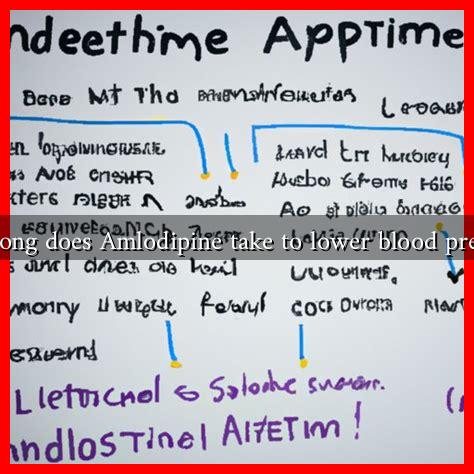-
Table of Contents
How Long Does Amlodipine Take to Lower Blood Pressure?
Amlodipine is a widely prescribed medication used to treat high blood pressure (hypertension) and certain types of angina (chest pain). As a calcium channel blocker, it works by relaxing the blood vessels, allowing blood to flow more easily. Many patients often wonder how long it takes for amlodipine to effectively lower their blood pressure. This article delves into the pharmacokinetics of amlodipine, its onset of action, and factors that can influence its effectiveness.
Understanding Amlodipine
Amlodipine is part of a class of medications known as dihydropyridine calcium channel blockers. It is commonly prescribed for:
- Essential hypertension
- Chronic stable angina
- Vasospastic angina
When taken, amlodipine is absorbed into the bloodstream and begins to exert its effects on the cardiovascular system. The time it takes for amlodipine to lower blood pressure can vary based on several factors.
Onset of Action
The onset of action for amlodipine is typically within 24 hours of administration. However, the full therapeutic effect may take longer to manifest. Here’s a breakdown of the timeline:
- Initial Effects: Patients may start to notice a reduction in blood pressure within 6 to 12 hours after taking the first dose.
- Peak Effects: The maximum effect usually occurs around 24 to 48 hours after administration.
- Steady State: It may take about 7 to 14 days for the drug to reach a steady state in the body, providing optimal blood pressure control.
Factors Influencing Amlodipine’s Effectiveness
Several factors can influence how quickly and effectively amlodipine lowers blood pressure:
- Dosage: The prescribed dosage can affect how quickly blood pressure is lowered. Higher doses may lead to faster results but can also increase the risk of side effects.
- Individual Metabolism: Each person metabolizes medications differently. Factors such as age, liver function, and genetic makeup can impact how quickly amlodipine works.
- Concurrent Medications: Other medications being taken can interact with amlodipine, potentially altering its effectiveness.
- Diet and Lifestyle: High sodium intake, obesity, and lack of physical activity can counteract the effects of amlodipine.
Case Studies and Statistics
Research has shown that amlodipine is effective in managing hypertension. A study published in the Journal of Hypertension found that patients taking amlodipine experienced an average reduction in systolic blood pressure of 10-15 mmHg and diastolic blood pressure of 5-10 mmHg within the first month of treatment. This highlights the medication’s efficacy in achieving significant blood pressure control.
Moreover, a long-term study indicated that patients who adhered to their amlodipine regimen had a 25% lower risk of cardiovascular events compared to those who did not. This underscores the importance of consistent medication use for effective blood pressure management.
Conclusion
Amlodipine is a powerful tool in the management of high blood pressure, with initial effects noticeable within hours and peak effects occurring within days. However, achieving optimal blood pressure control may take a week or more, depending on individual factors such as dosage, metabolism, and lifestyle choices. It is crucial for patients to follow their healthcare provider’s recommendations and maintain regular check-ups to monitor their blood pressure effectively.
In summary, while amlodipine can start lowering blood pressure relatively quickly, the full benefits may take time to realize. Understanding how this medication works and the factors that influence its effectiveness can empower patients to take charge of their health and work closely with their healthcare providers for the best outcomes.

